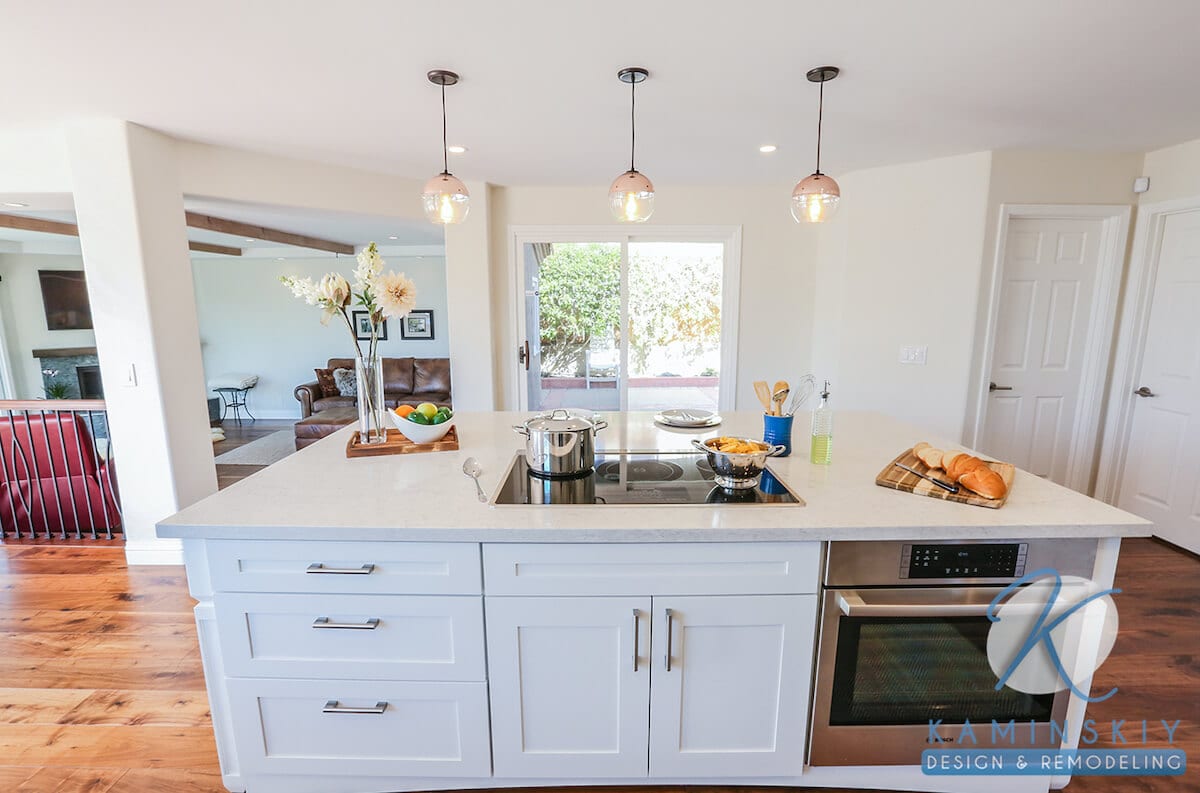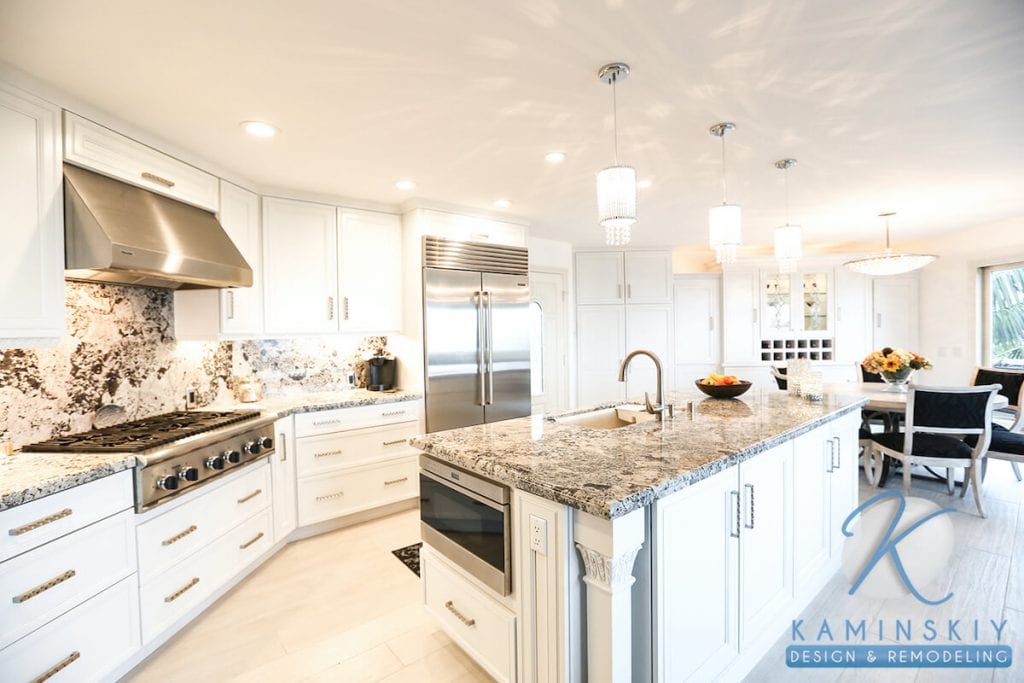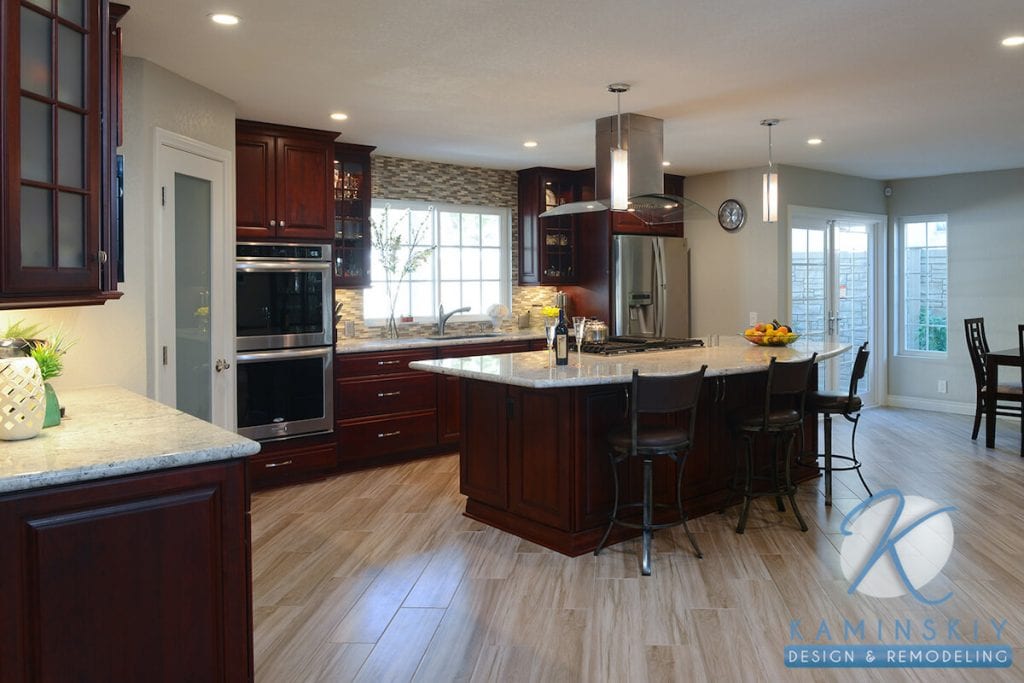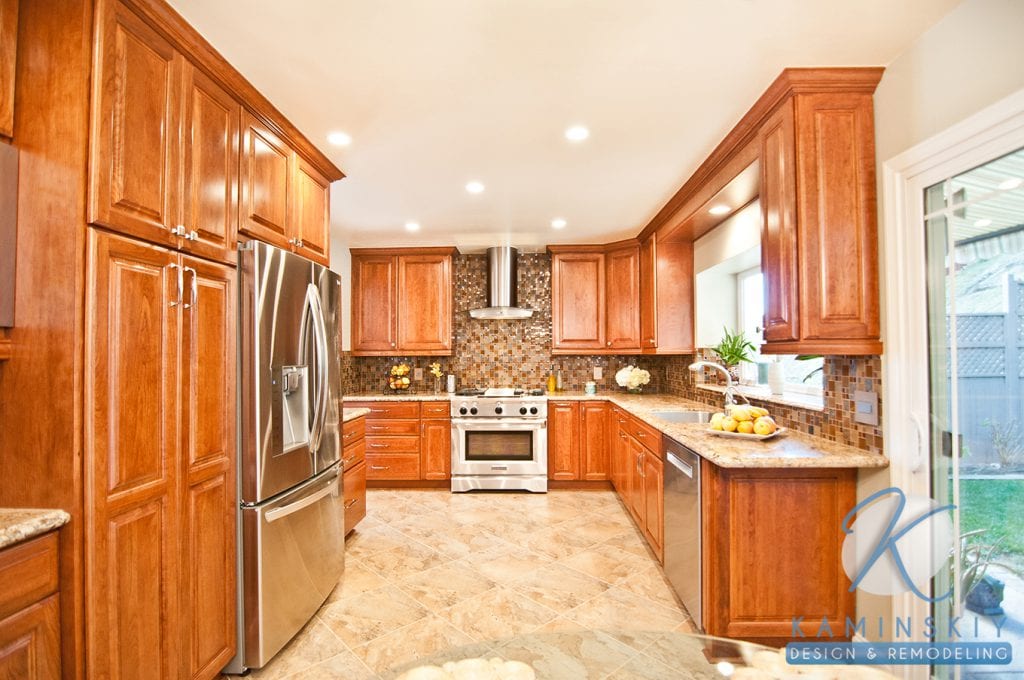
The kitchen, often referred to as the heart of the home, is where culinary magic happens, families gather, and memories are made. If you’ve been contemplating redesigning this space, blending the minimalism of modern aesthetics with the charm of traditional ones could be your answer. Let’s dive deeper into the transitional kitchen design.
Transitional kitchen design offers a harmonious fusion between modern and traditional styles. This balance creates spaces that are both aesthetically pleasing and functional. It’s the perfect solution for those who appreciate the sleekness of contemporary design but also yearn for the warmth of classic touches.

When considering a transitional kitchen, it’s crucial to understand its foundational elements. These components, when chosen thoughtfully, create a cohesive and balanced space.
The choice of materials plays a pivotal role in achieving the transitional look. Combining natural elements like wood or stone with modern materials like stainless steel or glass can create a stunning contrast. For instance, a wooden table paired with steel chairs or a stone fireplace with a sleek metal frame can exemplify transitional aesthetics.
While the open floor plans, popular in modern designs, offer a sense of spaciousness, integrating traditional elements can enhance functionality. Consider alcoves, niches, or even archways to delineate spaces without compromising the open feel. The beauty of transitional design is its ability to adapt to small apartments and sprawling homes.
While neutrals are the go-to choices, the transitional design doesn’t mean shying away from color. The trick is in balance. Soft beige walls can be accentuated with deep teal cabinets or a bold ruby kitchen island, ensuring the space feels lively yet refined.
Lighting is a subtle yet powerful tool to set the mood. Consider layering different light sources. While recessed lights offer functionality, pendant lights or classic chandeliers can add a touch of elegance. Remember, it’s all about creating a warm, welcoming ambiance.
Cabinetry is often a focal point in kitchens. In transitional designs, the cabinetry walks the line between ornate and minimalist. Think clean lines but with a touch of detail, such as beveled edges or subtle moldings. Hardware, too, can be a blend—perhaps brushed nickel handles with vintage design.

It’s essential to maintain equilibrium. If your kitchen features a state-of-the-art modern appliance, balance it with a classic, ornate light fixture. The beauty lies in the harmonious coexistence of different elements.
Your kitchen should echo your personality. Whether it is a cherished heirloom, a modern artwork, or a collection of vintage teacups, these personal elements make your space unique and tell your story.
Embarking on a kitchen redesign is not just about aesthetics—it’s a decision that impacts your daily life, the functionality of your space, and the overall vibe of your home. Often considered the heart of a home, the kitchen sets the tone for many family gatherings, parties, and quiet moments.
As such, ensuring that its design aligns with your practical needs and personal style is vital. The transitional kitchen offers a unique solution with its blend of modern and traditional elements. But is it the right choice for you?
While a transitional kitchen can fit into various architectural styles, ensuring it doesn’t clash with the rest of your home is essential. Consider how the transitional elements might blend or contrast if your home has distinct architectural features, like Victorian or ultra-modern.
Your kitchen should feel like a natural extension of your home. Assess the architectural style of your house. A transitional kitchen often bridges the design gap, making the entire home feel more cohesive.
If you plan to stay in your home for the long haul, design the kitchen yourself. However, if you see yourself moving in the foreseeable future, remember that a transitional kitchen, with its broad appeal, could be an attractive feature for potential buyers.
If selling your home in the future is on the cards, remember that a well-designed transitional kitchen can be a significant selling point to attract a diverse range of potential buyers.

A transitional kitchen offers the best of both worlds. It’s a celebration of individuality, tradition, and modernity. As you contemplate this design for your space, visualize a kitchen that’s not just about cooking but about living, laughing, and creating memories.
The transitional design offers many creative possibilities with its blend of styles. If you feel overwhelmed by the myriad choices or need more certainty about achieving the perfect balance, remember that expert guidance can make all the difference.
At Kaminskiy Design & Remodeling, we pride ourselves on our vast expertise and extensive experience in kitchen remodeling. Our expert designers are adept at turning any vision into a stunning reality.
We are deeply committed to assisting our clients in making informed decisions about their kitchen remodeling projects. If you have any questions or doubts regarding transitional kitchens or any other design aspects, we are here to help.
Our primary goal is to ensure that your kitchen is aesthetically pleasing and perfectly tailored to your needs. Schedule a free design consultation today! We’re eager to guide you every step of the way.
Transitional kitchen design is a harmonious fusion between modern and traditional styles, offering a balance that creates both aesthetically pleasing and functional spaces.
Transitional design is adaptable and can be seamlessly integrated into various home architectures, whether a modern loft or a century-old home.
Key elements include the choice of materials, layout, palette, lighting, and cabinetry. Combining natural elements like wood with modern materials like stainless steel, optimizing open layouts with traditional elements, using a neutral and balanced color palette, layering different light sources, and blending ornate and minimalist cabinetry are essential aspects.
Balance is achieved by maintaining equilibrium between different elements. For instance, if you have a modern appliance, complement it with a classic, ornate light fixture. Personal touches and expert advice can also aid in achieving the perfect balance.
Yes, one of the advantages of the transitional design is its adaptability. As styles evolve, the kitchen can be updated with minor changes without requiring a complete overhaul.
Absolutely! Vintage pieces can add a touch of nostalgia. Just ensure they’re complemented with modern touches to maintain the transitional feel.

Kimberly Villa is a recognized expert in the Home Design and Remodeling industry. Her passion for the industry is matched only by her love for sharing insights, new trends, and design ideas. Kimberly’s expertise and enthusiasm shine through in her contributions to the Kaminskiy Design and Remodeling website blog, where she regularly shares valuable information with readers.